The braille typewriter is a form of assistive technology for the blind, featuring six keys that correspond to each of the six dots of the braille code.
Like a manual typewriter, paper is inserted into the machine. Typing causes raised braille dots on the paper, which can be read with the fingers.
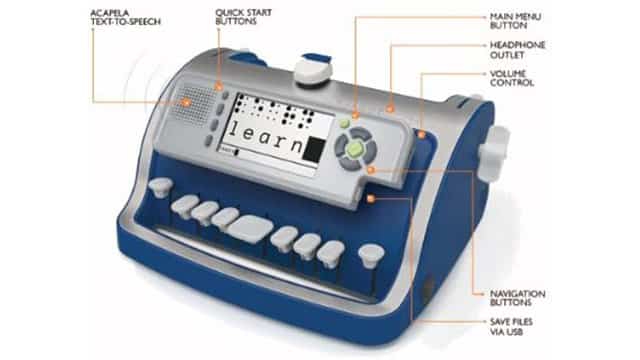
Perkins Smart Brailler
While the initial braille typewriters were noisy and broke frequently, improvements over the years yielded a high-quality machine. With the rise of technology and assistive software that exists today, some have argued that there is no longer a need for old-fashioned braille typewriters. Yet, they are simple and reliable, even in locations where there is no access to WiFi or available computers.
For these reasons, braille typewriters are still very popular among the blind; many braille users will continue to use braille typewriters even as they gain access to more advanced forms of assistance technology.
Want to try out a braille typewriter?
Here are some options to get you started:
1. Perkins Smart Brailler

The Perkins Smart Brailler is a modern, high-technology version of the original classic! The Smart Brailler includes a video screen that displays SimBraille and large print, and is designed to be used by both the blind and sighted alike. The Smart Brailler also has the capacity to save and transfer documents via USB.
2. Perkins Brailler
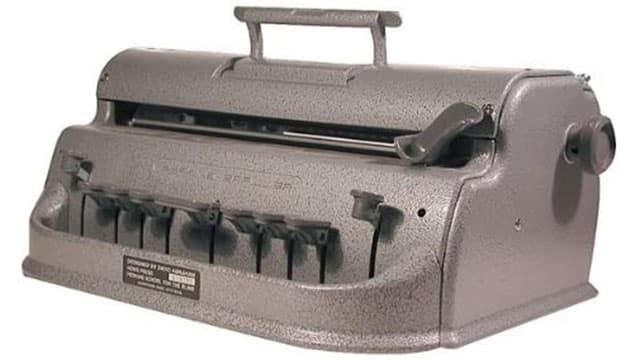
The Perkins Brailler is an old classic known for braille excellence! The Perkins Brailler is designed for desktop use, featuring adjustable margins. This device can accommodate several different paper sizes and can emboss up to 25 lines per page.
3. Perkins Unimanual Brailler
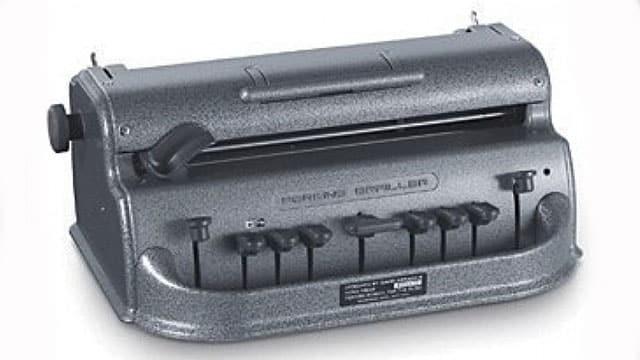
The Unimanual Brailler offers the same great features as the classic Brailler, but can be used with only one hand, where the Brailler requires two. The keys representing dots 1, 2, and 3 remain locked until dots 4, 5, or 6 are added or the space bar is used. The Unimanual Brailler features adjustable margins and can be used with a variety of paper sizes.
4. Large Cell Perkins Brailler
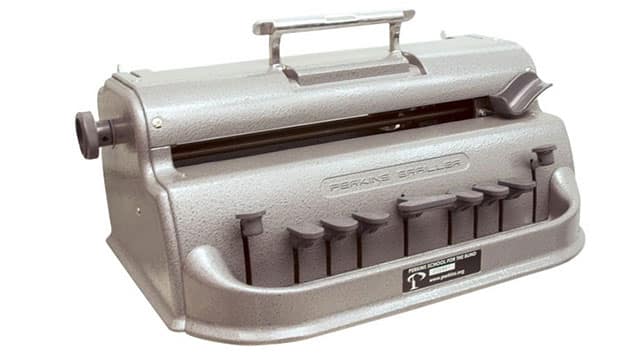
The Large Cell Perkins Brailler is designed with enlarged cells to offer more space in between the dots, making the braille easier to read. This option is perfect for those who experience tactile challenges.
Frequently Asked Questions
Q: Who invented the braille typewriter?
A: The braille typewriter, which became known as the Perkins Brailer, was invented in 1892 by Frank Haven Hall, an educator and inventor.
Q: Who is most likely to beneift from a braille typewriter?
A: Braille typewriters beneift anyone who is actively using braille or trying to learn braille; this includes the blind and the sighted alike.
Q: What considerations should I keep in mind when deciding between a Perkins Brailler and a Smart Brailler?
A: The most signfiicant consideration to keep in mind is whether or not you’d like to use the device in an area with no access to wifi and how technologically advanced you’d like the features to be.
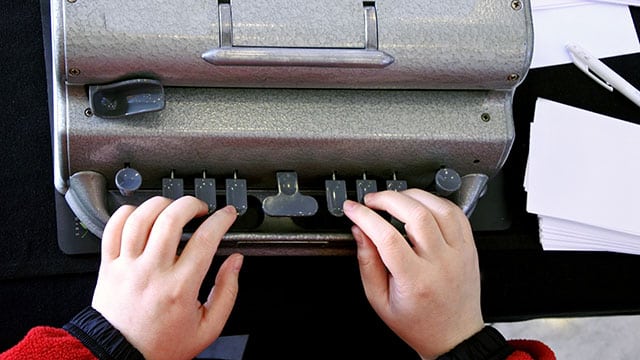

Leave a Reply